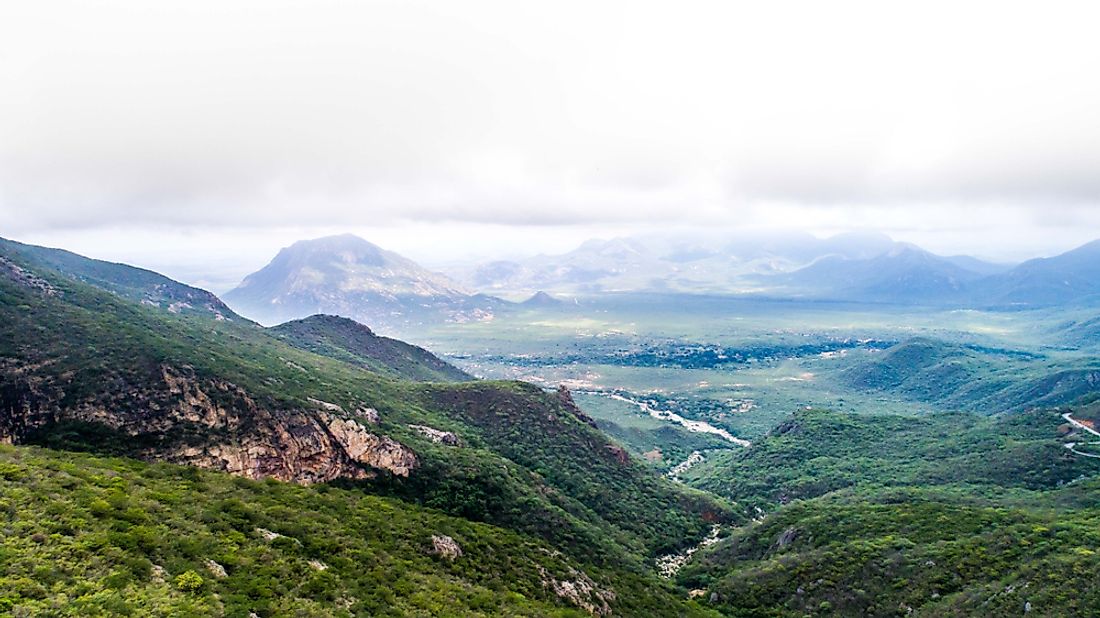Fun Facts about Angola

Angola is a country in Southern Africa. The country was a former Portuguese colony but gained self-rule in 1975. After years of civil war, Angola is slowly emerging as a major economic powerhouse in Africa, and has one of the fastest growing economies in the world. Here are some facts about Angola.
- Angola is Africa’s seventh largest country with an area of 481,400 square miles, and the 23rd largest country in the world. It is twice the size of Texas.
- However, a significant part of the country is located outside its borders. The Cabinda Province, with an area of 2,812 square miles, is located between the Democratic Republic of Congo and the Republic of Congo.
- Luanda is the largest city in Angola, and the country’s capital city. It was recently voted as the most expensive city in Africa for expatriates. The city has a sophisticated culture, causing to it being dubbed the “Paris of Africa.”
- Angola has an estimated population of over 32.7 million people and a population density of 53.6 persons per square mile.
- Angola gets its name from the ancient Kingdom of Ndongo, whose kings carried the title of “ngola.”
- The earliest inhabitants of Angola were nomadic Khoi and San ethnic groups, who predominantly practiced hunting and gathering.
- The Portuguese were the first Europeans to set foot in Angola. The Portuguese explorer, Diogo Cao, arrived in 1484.
- Angola gained independence from Portuguese colonial rule in 1975 after years of armed conflict.
- Cuba played an instrumental role in Angola’s struggle for independence by supplying freedom fighters with weapons.
- Cuban revolution leader Ernesto Che Guevara was dispatched by Cuban President Fidel Castro to offer technical support to the Angolan rebel troops.
- The Angolan armed forces are among the best equipped in the region, and includes an army, navy, and air force.
- The country has an annual defense budget of about $7 billion, which is equivalent to 5.25% of its GDP.
- The National Police of Angola is made up of over 9,000 officers, 6,000 of which are patrol officers.
- After emerging from decades of civil wars, Angola has risen to become one of the wealthiest countries in Africa with a GDP of $194 billion and a GDP per capita of $6500.
- The Angolan economy is one of the fastest growing in the world with an annual growth rate of 7%.
- However, the immense wealth of the country is held by a small minority of the population, while over 40% of Angolans living below the poverty line.
- The Angolan kwanza is the official currency used in Angola.
- China is Angola’s most important trading partner, as China receives 45.8% of the country’s exports.
- Angola is the largest oil producer in Sub-Saharan Africa, and in 2007 the country became a member of the Organization of the Petroleum Exporting Countries (OPEC).
- Oil accounts for over 90% of Angola’s total exports and oil revenue accounts for 80% of the government’s revenue.
- While diamonds make up a significant percentage of the country’s exports, most of the revenue from diamond exports is lost through smuggling.
- In the mid-20th century, Angola was a major agricultural producing country, but years of mismanagement and civil wars had made the country food deficient and reliant on imports from neighboring countries.
- Angola is expected to launch its inaugural satellite into space in 2017, which is to be used for telecommunication.
- After several years of war, the country has a shortage of men, and it is not unusual for a man to have several wives.
- Angola is the origin of the dreadlocks hair style.
- The country's civil war lasted from 1975 until 2002.
- The country has a relatively young population, as almost 70% of the population is under 24 years of age.
- The life expectancy in the country is 54.59 years for both men and women.
- Angola has one of the highest mortality rates in the world. In 2011 there were 23.4 deaths for every 1000 people in the country.
- The population of Angola was estimated at 22.8 million people in 2015.
- The giant Sable Antelope, which is endemic to Angola, was discovered in 2014, after it was thought to be extinct.
- Rucana falls in Angola is one of the largest waterfalls in the continent, measuring 2,300 feet wide and 390 feet high.







